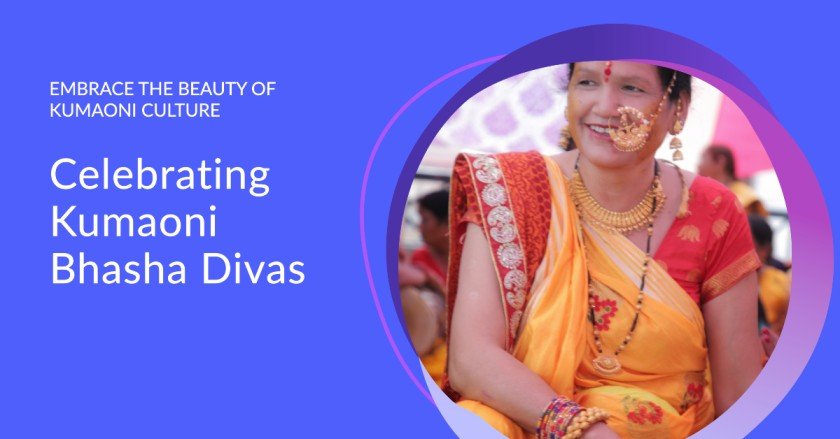
Kumaoni Bhasha Divas, or Kumaoni Language Day, is an annual event that celebrates the linguistic and cultural heritage of the Kumaon region in Uttarakhand. It is celebrated on 1st September every year to honor the martyrs of the Uttarakhand movement who fought for a separate state. The day aims to promote and preserve the Kumaoni language and culture.
The History and Origin of the Kumaoni Language
- The Kumaoni language is derived from the Indo-Aryan branch of languages and is influenced by various other languages and cultures such as Sanskrit, Prakrit, Tibetan, Nepali, Persian, Arabic, and English.
- The language has a diverse vocabulary and grammar that reflects the geographical and social diversity of the region.
- The language has a strong literary and oral tradition that showcases the values, beliefs, and customs of the Kumaoni people.
- The language is divided into six main dialects: Central Kumaoni, Southeastern Kumaoni, Western Kumaoni, Askoti, Sirali, and Johari.
The Rich Literary and Oral Tradition of the Kumaoni Language
- The Kumaoni language has produced many eminent writers, poets, scholars, historians, journalists, artists, and activists who have contributed to the literature and culture of the region. Some of the notable names are Sumitranandan Pant, Badri Dutt Pandey, Gaura Pant ‘Shivani’, Shekhar Joshi, Girish Tiwari ‘Girda’, Annpurna Nautiyal, etc.
- The Kumaoni language also has a rich oral tradition that is expressed through various forms of folk songs, stories, proverbs, riddles, jokes, and legends. The folk songs are classified into different categories such as Chaiti, Basanti, Holiya, Bajuband, Chhura, Hurkiya Bol, etc.
The Current Status and Challenges of the Kumaoni Language
- The Kumaoni language is facing many challenges and threats in modern times. It is not recognized as an official language by the Indian government and has limited scope in education, media, literature, and technology.
- It is also losing its speakers and popularity among the younger generation who prefer to use Hindi or English for communication and education.
- Therefore, there is an urgent need to revive and promote the Kumaoni language and culture through various means such as creating awareness, developing resources, encouraging usage, and supporting research.
The Diversity and Beauty of the Kumaoni Culture
- The Kumaoni culture is a blend of various influences such as Hinduism, Buddhism, Islam, Sikhism, Christianity, and tribal traditions. The Kumaoni culture is also influenced by the natural environment and the seasons of the Himalayan region.
- The Kumaoni culture is expressed through various forms of art, music, dance, festivals, and rituals. Some of the examples are:
- Art: Aipan (traditional painting), Pahari Miniature Painting (paper or cloth painting), Ringal (bamboo handicraft), etc.
- Music: Jagar (ritual music), Ramola (dance music), Cholia (martial music), etc.
- Dance: Barada Nati (religious dance), Chhapeli (seasonal dance), Chancheri (martial dance), etc.
- Festivals: Nanda Devi Raj Jat (pilgrimage festival), Harela (harvest festival), Basant Panchami (spring festival), etc.
- Rituals: Namkaran (naming ceremony), Dwar Puja (door worship ceremony), Shraddha (ancestor worship ceremony), etc.
The Kumaoni Bhasha Divas is a celebration of the language and culture of the Himalayan region. It is a celebration of the identity and pride of the Kumaoni people who have preserved their language and culture despite many challenges and difficulties. Kumaoni Bhasha Divas is a Celebration of the spirit and resilience of the people who have contributed to the nation’s progress and glory. It is a celebration of the harmony and diversity of India’s linguistic and cultural landscape.